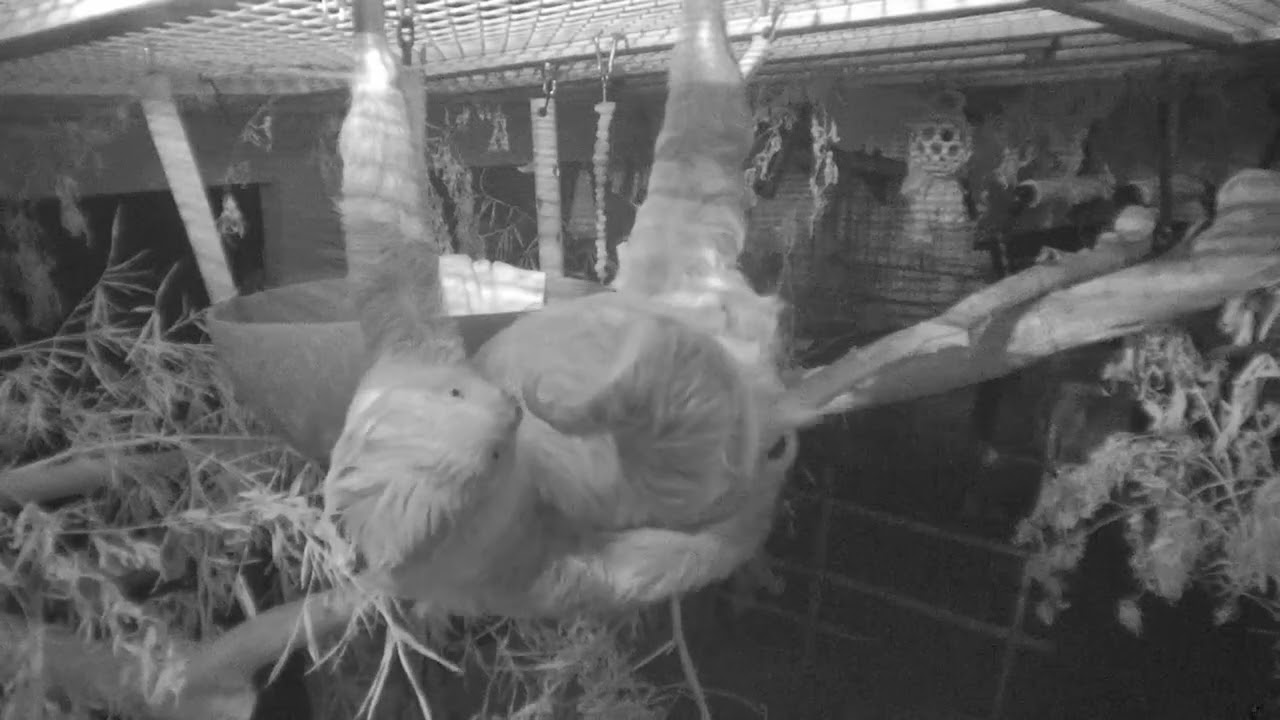- The significance of Linné’s Two-Toed Sloth Night Cam in promoting nocturnal animal behavior observation and education.
- An in-depth exploration of the habitation and behavior of Linné’s two-toed sloths.
- The role of zoo management in maintaining and improving environments conducive to wildlife conservation.
- The technological advancements and ethical considerations involved in implementing night vision cameras in zoos.
- Contributions of such digital tools to conservation efforts and public engagement in wildlife preservation.
Linné’s Two-Toed Sloth Night Cam is transforming perspectives on nocturnal wildlife observation. This technological development has broadened the horizons of animal behavior studies, particularly for species that are active under the cover of night. By providing an almost unprecedented window into the lives of nocturnal creatures, these cameras serve as an educational tool, enhancing our understanding of sloth behavior and ecology, while also making significant contributions to conservation.
Linné’s two-toed sloths, characterized by their slow physical movements and predominantly nocturnal habits, are an ideal subject for such explorations. These sloths, native to the rainforests of Central and South America, spend the majority of their lives hanging from trees. Their leisurely pace is an evolutionary adaptation that conserves energy, a crucial trait given their low-calorie diet of leaves. By utilizing the night cam, observers can witness behaviors previously concealed by the darkness, such as their feeding habits, grooming rituals, and slow locomotion through the canopy.
Understanding the habitat and behaviors of Linné’s two-toed sloths is paramount for effective zoo management. These animals thrive in environments that replicate their natural habitats, with adequate foliage and space to exhibit their instinctive behaviors. Providing such conditions in zoos requires in-depth knowledge of their dietary needs, social structures, and environmental preferences. Furthermore, behavioral studies facilitated by night vision technology help refine these settings, contributing to the overall health and welfare of the animals in zoological care.
Implementing night vision technology in zoo settings brings with it both opportunities and ethical considerations. The cameras offer a non-invasive means to conduct continuous behavioral observations without disrupting the animals’ natural routines. However, zoo management teams must be cautious not to compromise animal welfare for the sake of observation. The integration of such technology demands vigilance in ensuring that it serves the animal’s best interests, minimizing stress and avoiding any potential negative impacts from the presence of cameras.
Technological advancements like the Linné’s Two-Toed Sloth Night Cam are redefining public engagement with wildlife conservation. Digital media offers an appealing platform for conservation educators to highlight the intricacies of animal behavior and promote awareness about the significance of preserving these species in their natural habitats. As more people gain access to these live-streaming windows into the animal kingdom, they become more invested in conservation initiatives, fostering a global community of wildlife advocates. In essence, these tools play a pivotal role in bridging the gap between science and society, transforming passive observers into active participants in the journey towards wildlife preservation.
Ultimately, the introduction of night vision technology in the zoological field represents a significant leap forward in conservation efforts. It empowers researchers, educators, and enthusiasts with valuable insights into the lifecycles and ecosystems of species like the Linné’s two-toed sloth. Sharing this knowledge not only enriches our understanding but also strengthens our resolve to protect these creatures and their habitats for future generations. Through the lens of technology, a deeper appreciation for the nocturnal world unfolds, harmonizing the goals of zoology, zoo management, and wildlife conservation.
*****
Source Description
These night clips are from Linné’s two-toed sloth webcam! Sloths are mostly nocturnal, meaning they are the most active at night. #DidYouKnow Sloths internal organs are anchored to their ribs in order to support their hanging lifestyle.
Check out the webcam here: https://reidparkzoo.org/cameras/sloth/


